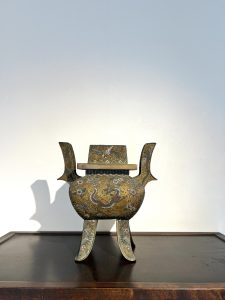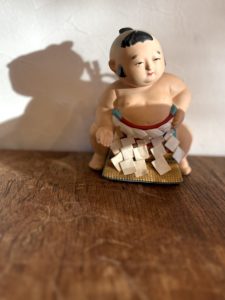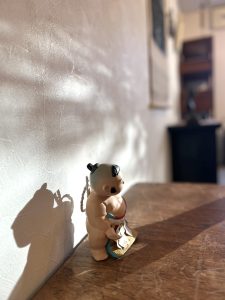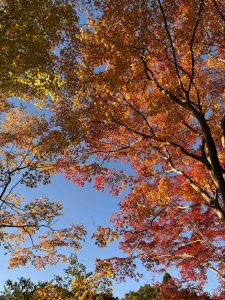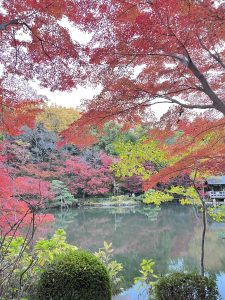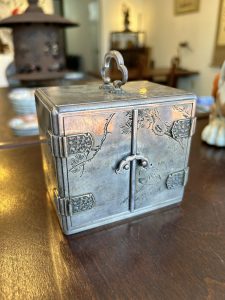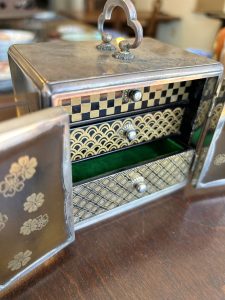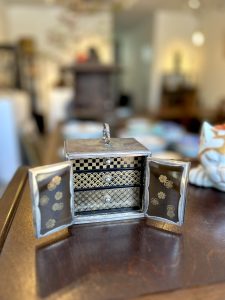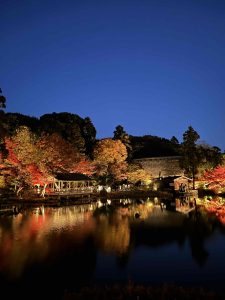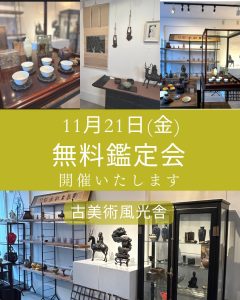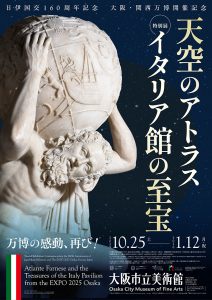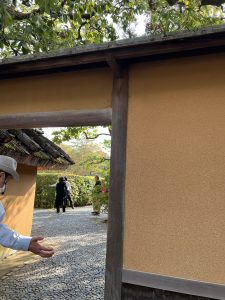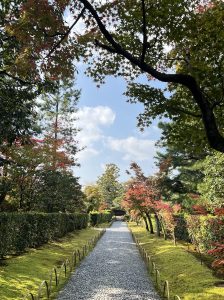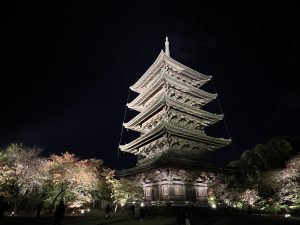
先日京都を訪れたのですが、最後の最後まで満喫しようと新幹線に乗る前に一足早く東寺の紅葉のライトアップへ行ってきました。少し早いかな…なんて思っていたのですが、すでに彩づいた紅葉と緑の葉の共演とライトアップされた東寺との景色が厳かな様子がとてもよかったです。
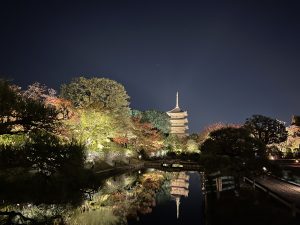
今朝のここ名古屋も、彩づいた紅葉とぬけるような青天という最高のお天気であります。そんな風景の中を、好きな音楽を聴きながら走り向けるという贅沢な通勤をしてきました。こんなベストコンディションの時期は通年のなかでもなかなかないので、他にも紅葉スポットがないものか探したくなってきました。
ということで、本日は愛知県の紅葉スポットのライトアップ情報をいくつかお伝えいたします。
*名古屋市東山動植物園の紅葉
名古屋随一の紅葉スポットとして毎年多くの来場者が訪れる紅葉スポットなのですが、公共交通機関でも訪れることができるということで毎年大盛況であります。自分も昨年訪れたのですが、植物園にはイロハモミジ、ハウチワカエデなど紅葉する樹木が500本以上。公園内は自然の地形をそのまま生かした山野のようで、也有園から日本庭園まで続く園路沿いの紅葉が特におすすめ。モミジの仲間約60種200本が連なり一度見ればその美しさに感動する。ライトアップにより水面に映る紅葉は一度みてほしいものです。
2025年11月22日(土)~24日(振休)、29日(土)・30日(日)、12月6日(土)・7日(日)には、紅葉ライトアップも行われ、植物園エリアの一部を20時30分まで開園延長。
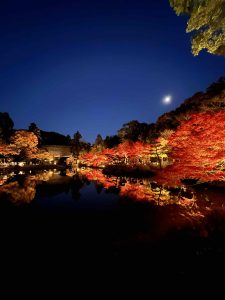
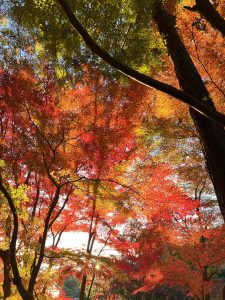
*徳川園の紅葉
愛知県名古屋市の池泉回遊式の日本庭園。秋の紅葉の見頃は、例年11月中旬から12月上旬頃ですが、2025年11月14日(金)~12月7日(日)の期間には「錦を纏う 徳川園紅葉祭」を開催。
11月21日(金)~24日(振休)および28日(金)~30日(日)には夜間開園を実施、期間中は開園時間が20:00(入園は19:30まで)に延長される。夜間開園のない通常開園日も16:00からライトアップ。
*白鳥庭園の紅葉
名古屋市内最大級の規模を誇る日本庭園でして、秋にはイロハモミジやドウダンツツジなど約1500本が彩づく。紅葉の見ごろになる時期からは雪吊りがあり、放射線状に広がる造形美とともに紅葉が楽しめます。
2025年11月15日(土)・16日(日)・22日(土)~24日(振休)には、観楓会を開催。また、11月15日(土)・16日(日)、21日(金)~24日(振休)、28日(金)~30日(日)の日没~20時には、紅葉ライトアップを開催(入園は19時30分まで、北門は17時に閉門)。
*岡崎城公園の紅葉
徳川家康公が誕生した岡崎城をはじめ、家康公ゆかりの史跡が数多く残る歴史公園。岡崎城周辺では、二の丸能楽堂やお茶室付近を中心に、紅葉が美しく彩る秋の風景が広がり、石垣や堀を囲む紅葉を眺めながら園内を散策できます。
例年11月下旬から12月上旬には、美しい紅葉に彩られ見頃を迎える。二の丸能楽堂周辺のイチョウや茶室のイロハモミジは見事で、2025年11月21日(金)〜12月7日(日)にはライトアップも行われます。
*香嵐渓の紅葉
愛知県豊田市にある紅葉の名所香嵐渓。1634年(寛永11年)頃に香積寺第11世住職三栄和尚がスギやモミジを手植えしたのが始まりとされ、大正末期から昭和初期には、住民のボランティアでモミジの大植樹が施されました。
イロハモミジ、オオモミジなど11種のカエデが約3000本あると言われており、秋になると赤や黄色に色づく景色は壮観。例年、11月中旬から11月下旬頃にかけて山全体の約3000本のモミジが一斉に色づき、巴川の川面を美しく彩る。夜には山全体がライトアップされ、昼間とはまた違った幻想的な景色が見られます。
2025年11月1日(土)~30日(日)の期間は、香嵐渓もみじまつりが開催。ライトアップも日没~21時の間実施され、期間中の土日には「竹灯りの香積寺」や「願掛けろうそく」など灯りのイベントも。
*大井平公園の紅葉
愛知県稲武の紅葉の名所として有名なスポット。約520本のカエデやイロハモミジ、イチョウが植えられ。名倉川沿いにあるため、秋には川面に美しい紅葉が映し出されるさまも美しく、常緑樹の緑と赤、黄色のコントラストも魅力のひとつ。公園内は遊歩道も整備されていて、ゆったりと過ごすことができます。
例年、10月下旬から11月上旬頃から彩づき始め、11月上旬から11月中旬頃にかけてが紅葉の見頃の時期ですが、2025年11月8日(土)~11月24日(振休)には、稲武もみじまつりが開催。期間中は、19時までライトアップも行われます。
*愛知県緑化センターの紅葉
愛知県政100年を記念して愛知県豊田市に建設された公園で、48.2ヘクタールの広大な園内では年間を通して植物や自然を楽しめます。秋にはモミジ、ケヤキ、メタセコイア、ラクウショウ、イチョウなど園内の多様な木々が次々と彩づき、11月中旬から11月下旬にかけて紅葉の見頃を迎え、黄金色に彩られるメタセコイア並木も見事です。隣接する愛知県昭和の森には森林浴コースも整備されており、紅葉の中の散策も楽しめます。
紅葉期間中、2025年11月22日(土)・23日(祝)には「みどりフェスティバル2025秋」開催。また11月21日(金)~23日(祝)16時30分~20時30分には緑化センター日本庭園で「ふじおか紅葉まつりライトアップ」が開催。
*稲沢市祖父江町の紅葉
祖父江町内には約1万本のイチョウの木が植えられており毎年11月下旬から12月上旬にかけて一斉に黄葉します。町中が黄金色に染まり、黄色一色の絶景を楽しむことがでます。2025年11月22日(土)~30日(日)には、「黄葉まつり」が祖父江ぎんなんパークと祐専寺、稲沢厚生病院で開催される。平日は9時から15時、土日祝日は9時から16時の開催となる。11月22日(土)~29日(土)には祖父江ぎんなんパークでイチョウの木ライトアップ(17時~20時)も行われます。
他にもライトアップスポットがあるかもしれませんが、本日は一部ご紹介となりました。どのスポットも訪れる際は、ライトアップの日時、紅葉の様子や交通情報などなど各サイトなどで情報を確認してからお出かけくださいませ。
それにしても、自分もどこか行ってみたくなりましたので只今検討中であります。(スタッフY)
The other day I visited Kyoto, and wanting to enjoy it to the very last moment, I headed to the illuminated autumn leaves at Tōji Temple just before catching the Shinkansen. I wondered if it might be a bit early… but the sight of the already-colored leaves and green foliage together with the illuminated temple was truly splendid and solemn.
This morning here in Nagoya, too, we have the best weather imaginable: vividly colored autumn leaves and a clear blue sky stretching endlessly. I enjoyed the luxury of commuting through such scenery, listening to my favorite music as I ran. Such perfect conditions are rare even throughout the year, so I found myself wanting to explore other autumn leaf spots.
So, today I’ll share some information about illuminated autumn leaf spots in Aichi Prefecture.
*Autumn Foliage at Nagoya City Higashiyama Zoo and Botanical Gardens
As Nagoya’s premier autumn foliage spot, it attracts many visitors annually. Its accessibility by public transportation contributes to its huge popularity every year. I visited last year myself. The botanical garden features over 500 trees that change color, including Japanese maples and Japanese horse chestnuts. The park retains its natural terrain, resembling mountain wilderness. The foliage along the paths stretching from Yuen Garden to the Japanese Garden is especially recommended. About 200 trees representing 60 varieties of maple line the route, creating a breathtaking sight. The illuminated foliage reflecting on the water is something you really should see.
From Saturday, November 22, 2025, to Monday, November 24 (holiday), Saturday, November 29, Sunday, November 30, Saturday, December 6, and Sunday, December 7, autumn foliage illumination events will be held, with the botanical garden area extending its opening hours until 8:30 PM.
*Autumn Foliage at Tokugawa Garden
A stroll-style Japanese garden with ponds in Nagoya City, Aichi Prefecture. The peak autumn foliage season is typically mid-November to early December. However, the “Tokugawa Garden Autumn Foliage Festival: Adorned in Brocade” will be held from Friday, November 14 to Sunday, December 7, 2025.
Nighttime opening hours will be available from Friday, November 21 to Monday, November 24 (holiday) and from Friday, November 28 to Sunday, November 30. During this period, the opening hours will be extended until 8:00 PM (last admission at 7:30 PM). On regular opening days without nighttime hours, illumination will begin at 4:00 PM.
*Autumn Foliage at Hakucho Garden
This Japanese garden, one of the largest in Nagoya, features approximately 1,500 trees including Japanese maple and Japanese andromeda, which burst into color in autumn. Snow ropes are installed from the peak viewing period, allowing visitors to enjoy the foliage alongside the garden’s radiating, sculptural beauty.
Maple Viewing Events will be held on Saturday, November 15, Sunday, November 16, and Saturday, November 22 through Monday, November 24 (holiday). Additionally, from sunset to 8:00 PM on November 15 (Sat), 16 (Sun), 21 (Fri) to 24 (holiday), and 28 (Fri) to 30 (Sun), the autumn leaves will be illuminated (last admission at 7:30 PM; North Gate closes at 5:00 PM).
* Autumn Foliage at Okazaki Castle Park
This historic park preserves numerous sites associated with Tokugawa Ieyasu, including Okazaki Castle where he was born. Around Okazaki Castle, the autumn scenery is beautifully colored by foliage, particularly near the Ninomaru Noh Theater and tea rooms. Visitors can stroll through the park, viewing the autumn leaves surrounding the stone walls and moats.
The peak viewing period, when the park is beautifully colored, typically occurs from late November to early December. The ginkgo trees around the Ninomaru Noh Theater and the Japanese maple trees near the tea house are particularly splendid. Illumination events will also be held from Friday, November 21, 2025, to Sunday, December 7, 2025.
Kōrankei Autumn Foliage
Kōrankei, a renowned autumn foliage spot in Toyota City, Aichi Prefecture. Its origins trace back to around 1634 (Kan’ei 11), when the 11th head priest of Kōjaku-ji Temple, Priest San’ei, personally planted cedar and maple trees. From the late Taisho period to the early Showa period, residents volunteered to carry out large-scale maple tree planting.
It is said to contain about 3,000 maple trees of 11 varieties, including Japanese maple and large-leaved maple. The scenery in autumn, when they turn red and yellow, is spectacular. Every year, from mid- to late November, all 3,000 maples across the mountain turn color simultaneously, beautifully coloring the surface of the Tomoe River. At night, the entire mountain is illuminated, offering a fantastical view different from daytime.
The Kōrankei Maple Festival runs from Saturday, November 1st to Sunday, November 30th, 2025. Illumination takes place from sunset to 9:00 PM. On weekends during the festival period, light events like the “Bamboo Lanterns at Kōjaku-ji Temple” and “Wish-Making Candles” are also held.
*Oihira Park Autumn Foliage
A famous autumn foliage spot in Inabu, Aichi Prefecture. Approximately 520 maple trees, Japanese maples, and ginkgo trees are planted here. Located along the Nagura River, the beautiful reflection of autumn colors on the water surface in autumn is stunning, and the contrast between the evergreen foliage and the red and yellow leaves is also a major attraction. Walking paths are well-maintained within the park, allowing visitors to relax and enjoy the scenery.
The leaves typically begin to change color from late October to early November, with peak viewing occurring from early to mid-November. The Inabu Momiji Festival will be held from Saturday, November 8, 2025, to Monday, November 24 (holiday). During this period, the park will be illuminated until 7:00 PM.
*Autumn Foliage at Aichi Prefectural Greening Center
Built in Toyota City, Aichi Prefecture to commemorate the 100th anniversary of Aichi Prefectural Government, this park spans a vast 48.2 hectares where visitors can enjoy plants and nature year-round. In autumn, diverse trees throughout the park—maple, zelkova, metasequoia, ginkgo, and others—gradually change color. Peak viewing occurs from mid- to late November, with the golden metasequoia avenue being particularly spectacular. The adjacent Aichi Prefectural Showa Forest features a forest bathing course, perfect for strolls amidst the autumn foliage.
During the peak foliage season, the “Midori Festival 2025 Autumn” will be held on Saturday, November 22 and Sunday, November 23 (holiday). Additionally, the “Fujioka Autumn Leaves Festival Light-Up” will be held at the Greenery Center Japanese Garden from November 21 (Fri) to 23 (Holiday), 4:30 PM to 8:30 PM.
*Autumn Leaves in Sobue Town, Inazawa City
Approximately 10,000 ginkgo trees are planted throughout Sobue Town. They turn yellow all at once from late November to early December each year. The entire town is dyed golden, offering a breathtaking view of a sea of yellow. The “Yellow Leaves Festival” will be held at Sobue Ginnan Park, Yusenji Temple, and Inazawa Kosei Hospital from Saturday, November 22 to Sunday, November 30, 2025. Weekdays: 9:00 AM to 3:00 PM Weekends & Holidays: 9:00 AM to 4:00 PM From Saturday, November 22nd to Saturday, November 29th, the ginkgo trees at Sobue Ginnan Park will also be illuminated from 5:00 PM to 8:00 PM.
There may be other light-up spots, but today we’ve only introduced a few. Before visiting any spot, please check the light-up dates and times, the condition of the autumn leaves, traffic information, and other details on each site before heading out.
That said, I’ve gotten the urge to go somewhere myself, so I’m currently considering my options.
*******************
ご実家の整理やお片付けなどをされている方のご相談などが多くございます。
お片付けなどくれぐれもご無理のないようになさってくださいませ。
風光舎では古美術品や骨董品の他にも絵画や宝石、趣味のお品など様々なジャンルのものを買受しております。
お片付けをされていて、こういうものでもいいのかしらと迷われているものでも、どうぞお気軽にご相談下さいませ。
また風光舎は、出張買取も強化しております。ご近所はもちろん、愛知県内、岐阜県、三重県その他の県へも出張いたします。
まずは、お電話お待ちしております。
愛知県名古屋市千種区姫池通
骨董 買取【古美術 風光舎 名古屋店】
TEL052(734)8444
10:00-17:00 OPEN
#出張買取#骨董#古美術#骨董品#絵画#版画#茶道具#刀剣#彫刻
